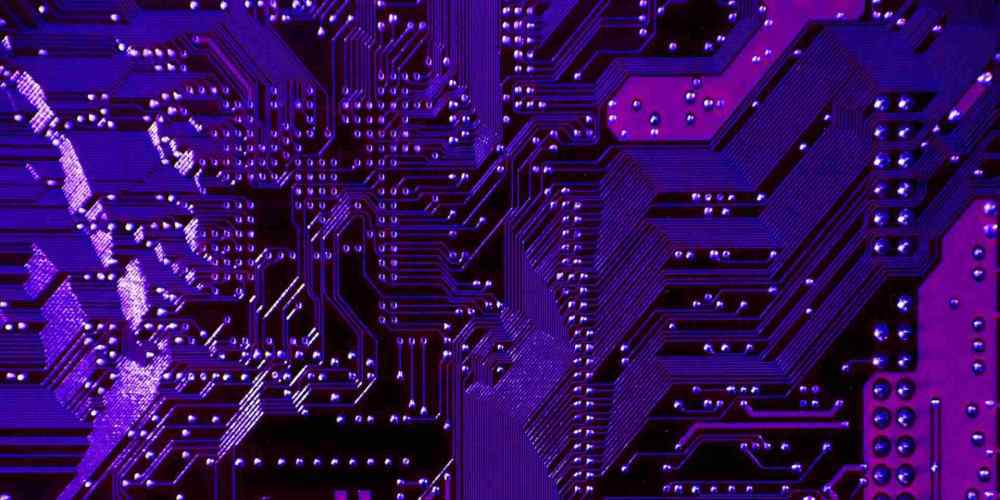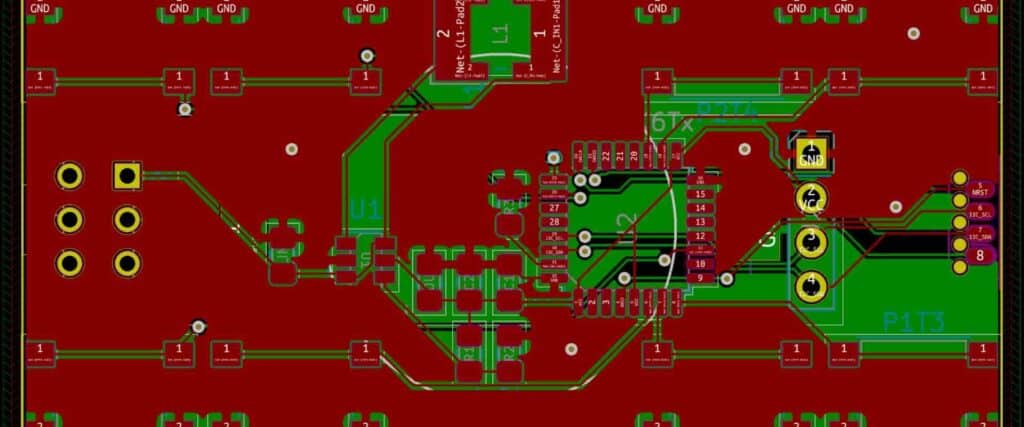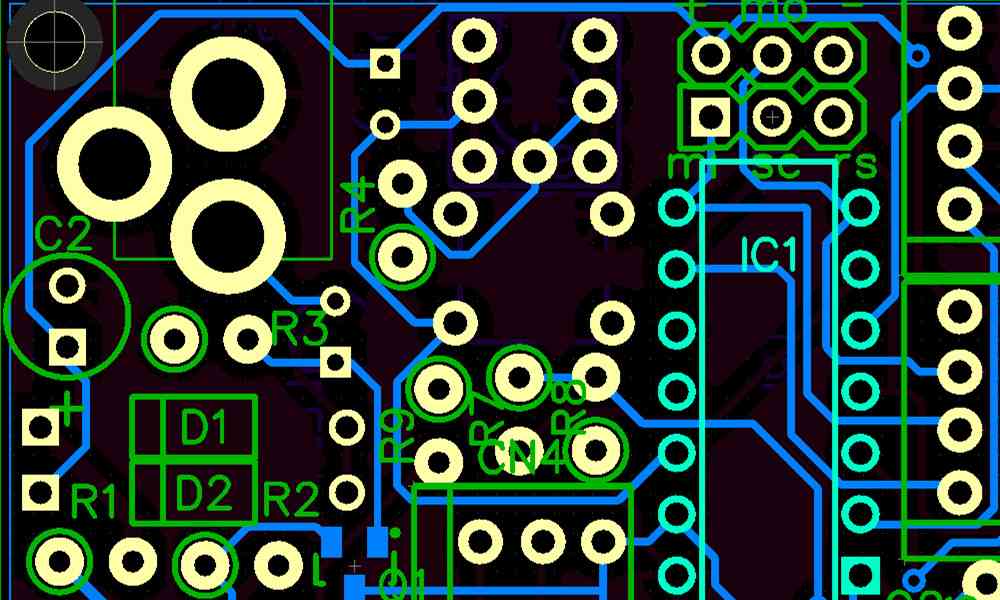Low noise electronic system design is a critical aspect of modern electronic engineering. Noise, defined as any unwanted electrical signal that interferes with the desired signal, can have a significant impact on the performance of electronic systems. It can cause distortion, reduce signal-to-noise ratio, and even lead to complete system failure. Therefore, it is essential to design electronic systems with low noise levels to ensure optimal performance.
One of the main challenges in low noise electronic system design is to identify and mitigate the sources of noise. These sources can be internal, such as thermal noise generated by electronic components, or external, such as electromagnetic interference from other electronic devices. Designers must carefully select components, layout circuit boards, and shield sensitive components to minimize noise. Additionally, designers must consider the impact of noise on the entire system and optimize the design accordingly.
In summary, low noise electronic system design is crucial for achieving optimal performance in modern electronic systems. It requires careful consideration of noise sources, component selection, and system layout. By following best practices in low noise design, engineers can ensure that their electronic systems operate reliably and efficiently.

Basics of Low Noise Electronic System Design
Sources of Noise
Electronic systems are prone to various types of noise that can negatively impact their performance. Some of the most common sources of noise in electronic systems include:
-
Thermal noise: This type of noise is generated by the random motion of electrons in a conductor. It is proportional to the temperature of the conductor and cannot be eliminated completely.
-
Shot noise: Shot noise is caused by the random nature of electron flow in a conductor. It is proportional to the current flowing through the conductor and can be reduced by decreasing the current or increasing the bandwidth.
-
1/f noise: Also known as flicker noise, this type of noise is caused by the fluctuations in the resistance of a conductor. It is most pronounced at low frequencies and can be reduced by using high-quality components.
Noise Reduction Techniques
Low noise electronic system design involves several techniques to reduce the impact of noise on the system. Some of the most effective techniques include:
-
Grounding: Proper grounding is essential to minimize noise in electronic systems. Ground loops should be avoided, and all ground connections should be kept as short as possible.
-
Shielding: Shielding is used to protect sensitive components from external electromagnetic interference. Shielding can be achieved by using conductive enclosures or by adding shielding material to the PCB.
-
Filtering: Filters can be used to remove unwanted noise from the system. Common types of filters include low-pass, high-pass, and band-pass filters.
-
Component selection: High-quality components should be used in low noise electronic systems. Components with low noise figures and high linearity are preferred.
By implementing these techniques, it is possible to design electronic systems with minimal noise and optimal performance.
Components for Low Noise Electronic System Design

When designing low noise electronic systems, it is essential to select components that can minimize noise and interference. Some of the critical components for low noise electronic system design are:
Low Noise Amplifiers
Low noise amplifiers (LNAs) are critical components for low noise electronic system design. They are used to amplify weak signals while introducing minimal noise. LNAs are designed to have a low noise figure, which is a measure of the noise added by the amplifier. The lower the noise figure, the better the amplifier’s performance in low noise applications. Some of the common types of LNAs used in low noise electronic system design are:
- Discrete transistor amplifiers
- Monolithic microwave integrated circuit (MMIC) amplifiers
- Low noise operational amplifiers (op-amps)
Filters
Filters are critical components for low noise electronic system design. They are used to remove unwanted signals and noise from the system while passing the desired signals. Filters can be designed to operate in different frequency ranges and have different characteristics such as low pass, high pass, bandpass, and bandstop. Some of the common types of filters used in low noise electronic system design are:
- Passive filters such as RC filters, LC filters, and RLC filters
- Active filters such as operational amplifier-based filters and switched capacitor filters
- Digital filters such as finite impulse response (FIR) filters and infinite impulse response (IIR) filters
Voltage Regulators
Voltage regulators are critical components for low noise electronic system design. They are used to regulate the voltage supplied to the system while minimizing noise and ripple. Voltage regulators can be designed to operate in different voltage ranges and have different characteristics such as linear and switching. Some of the common types of voltage regulators used in low noise electronic system design are:
- Linear regulators such as LDOs and linear voltage regulators
- Switching regulators such as buck converters, boost converters, and buck-boost converters
In conclusion, selecting the right components is critical for low noise electronic system design. Low noise amplifiers, filters, and voltage regulators are some of the essential components that can minimize noise and interference in the system. By carefully selecting these components, designers can ensure that their low noise electronic systems perform optimally.
Layout and Grounding for Low Noise Electronic System Design

PCB Layout Considerations
The layout of the printed circuit board (PCB) is critical for achieving low noise in electronic systems. It is essential to keep the signal traces as short as possible and to minimize the loop area of the traces. The loop area is the area enclosed by the signal trace and its return path, and it is proportional to the amount of noise that is coupled into the trace. By reducing the loop area, the amount of noise coupled into the signal trace can be minimized.
Another important consideration for PCB layout is to separate the analog and digital circuits. Analog and digital circuits should be placed on separate PCB layers to minimize the coupling of noise from the digital circuits into the analog circuits. This separation can be achieved by using a ground plane between the analog and digital layers.
Grounding Techniques
Grounding is also critical for achieving low noise in electronic systems. The ground plane should be designed to provide a low impedance path for the return currents. This can be achieved by using a large ground plane and by placing vias around the ground plane to connect it to other ground planes in the system.
It is also essential to minimize the number of ground loops in the system. Ground loops can occur when there are multiple paths for the ground current to flow. These loops can cause noise to be coupled into the system and can result in ground noise.
To minimize ground loops, it is essential to use a single-point ground. This technique involves connecting all of the ground points in the system to a single point. This point should be located as close as possible to the power supply ground. By using a single-point ground, the number of ground loops in the system can be minimized, and the amount of noise coupled into the system can be reduced.
Overall, careful attention to PCB layout and grounding techniques is critical for achieving low noise in electronic systems. By following these guidelines, it is possible to minimize the amount of noise in the system and to achieve optimal system performance.
Measurement and Testing of Low Noise Electronic Systems
Noise Figure Measurement
Noise figure measurement is a crucial step in the testing of low noise electronic systems. It is a measure of the noise added by the system, which can impact the overall performance of the system. The noise figure measurement is typically performed using a noise source and a spectrum analyzer. The noise source is used to inject noise into the system, and the spectrum analyzer is used to measure the output noise power.
S-Parameter Measurement
S-parameter measurement is another important test for low noise electronic systems. It is used to measure the reflection and transmission characteristics of the system. The S-parameters are typically measured using a vector network analyzer (VNA). The VNA is used to measure the magnitude and phase of the signals at various frequencies. This information can be used to determine the performance of the system and identify any areas for improvement.
EMI/EMC Testing
EMI/EMC testing is essential for low noise electronic systems to ensure that they do not interfere with other systems or devices. EMI/EMC testing involves measuring the electromagnetic emissions and susceptibility of the system. The testing is typically performed using an EMI receiver and a spectrum analyzer. The EMI receiver is used to measure the emissions from the system, and the spectrum analyzer is used to analyze the emissions and identify any potential sources of interference.
In conclusion, accurate measurement and testing of low noise electronic systems are critical to ensure that they perform optimally and do not cause interference with other systems. Noise figure measurement, S-parameter measurement, and EMI/EMC testing are essential tests that should be performed during the design and testing of low noise electronic systems.
Applications of Low Noise Electronic System Design

RF and Microwave Systems
In RF and microwave systems, low noise design is crucial for achieving high signal-to-noise ratios (SNR). Low noise amplifiers (LNAs) are commonly used in these systems to amplify weak signals without adding significant noise. By using low noise transistors and optimizing the circuit design, LNAs can achieve noise figures as low as 0.1 dB. Low noise design is also important in receiver front-ends, where it can improve sensitivity and reduce interference from other signals.
Audio and Video Systems
Low noise design is also important in audio and video systems. In audio systems, low noise design can improve the dynamic range and reduce distortion. In video systems, low noise design can improve the signal-to-noise ratio and reduce the visibility of noise in the picture. Low noise design is particularly important in high-end audio and video systems, where the goal is to reproduce the original signal with as little distortion as possible.
Medical and Scientific Instruments
In medical and scientific instruments, low noise design is important for achieving accurate measurements. Many instruments, such as EEGs and ECGs, measure signals that are very small and require amplification. Low noise design is critical in these applications to ensure that the noise introduced by the amplifier does not overwhelm the signal of interest. Low noise design is also important in scientific instruments, such as telescopes and particle detectors, where the goal is to detect very weak signals in a noisy environment.
Overall, low noise electronic system design is important in a wide range of applications, from RF and microwave systems to audio and video systems to medical and scientific instruments. By reducing noise, low noise design can improve sensitivity, dynamic range, and signal-to-noise ratio, leading to more accurate measurements and better system performance.

